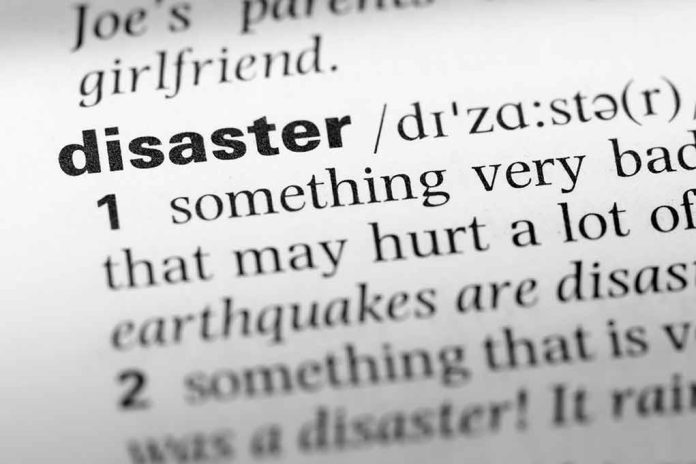
Nearly 60% of American adults are unprepared for disasters, leaving their families vulnerable to chaos and danger.
At a Glance
- Most Americans lack disaster response practice, highlighting a critical need for preparedness.
- A comprehensive home emergency plan is essential for family safety and minimizing panic.
- Emergency kits should include essentials for at least 72 hours and be reviewed annually.
- Family communication plans and designated meeting spots are crucial for reunification.
- Regular practice of emergency plans ensures everyone knows their role during a crisis.
The Alarming State of American Preparedness
In an era of increasing natural disasters and unforeseen emergencies, the lack of preparedness among American households is a cause for serious concern. The Federal Emergency Management Agency (FEMA) has revealed a startling statistic that underscores the vulnerability of our communities, stating that nearly 60% of Americans have not practiced what to do should disaster strike.
This lack of preparation leaves the majority of American families at risk when disaster strikes. Without a plan, chaos can ensue, potentially leading to injury, property loss, or worse. It’s time for every household to take proactive steps to protect themselves and their loved ones.
Creating a Comprehensive Home Emergency Plan
The foundation of disaster preparedness is a well-thought-out home emergency plan. This plan should be tailored to your family’s specific needs and the potential risks in your area. Consider factors such as natural disasters common to your region, the ages and abilities of family members, and any special requirements for pets or individuals with medical conditions.
A crucial component of your plan should be the establishment of a family meeting place. This location should be familiar to all family members and easy to access in the event of an emergency. As Ready.gov advises, “Make a plan today. Your family may not be together if a disaster strikes, so it is important to know which types of disasters could affect your area. Know how you’ll contact one another and reconnect if separated. Establish a family meeting place that’s familiar and easy to find.”
Assembling Your Emergency Kit
An essential aspect of disaster preparedness is having a well-stocked emergency kit. This kit should contain enough supplies to sustain your family for at least 72 hours.
Key items should include non-perishable food, water, first-aid supplies, flashlights, batteries, and important documents. Don’t forget to consider the specific needs of your family members, including medications, infant supplies, or pet food. Review and update your kit annually to ensure all items are in good condition and haven’t expired.
Communication: The Key to Survival
In times of crisis, communication can mean the difference between life and death. Develop a family communication plan that includes emergency contact numbers and designates an out-of-area contact. This person can serve as a central point of communication if local lines are overwhelmed.
Ensure every family member knows how to use emergency alert systems and has access to a battery-powered or hand-crank radio for updates. In today’s digital age, consider downloading emergency preparedness apps that can provide real-time information and guidance during a disaster.
Practice Makes Perfect
Having a plan is only the first step. Regular practice is essential to ensure everyone knows their role and can act quickly in an emergency. The American Red Cross emphasizes the importance of preparation:
“MAKE A PLAN”
Conduct family drills at least twice a year. Practice evacuation routes, test communication plans, and ensure everyone can access and use emergency supplies. These exercises will help identify any gaps in your plan and build confidence in your family’s ability to respond effectively.
Conclusion: A Call to Action
The statistics are clear: too many American families are unprepared for disasters. By taking the time to create and practice a comprehensive emergency plan, you’re not just protecting your family—you’re contributing to the resilience of your entire community. Don’t wait for a crisis to strike. Start your preparedness journey today and ensure that your household is ready to face whatever challenges may come.
Sources:
- 7 tips for creating a home emergency plan
- Ready.gov Make A Plan
- Make a Plan: Create and practice an emergency plan so your family will know what to do in a crisis







